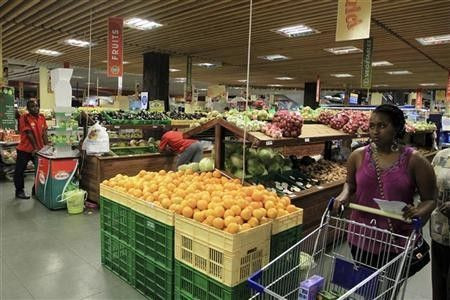Meat, Produce, Dairy Prices On The Rise While Processed Foods, Grain Prices Remain Stable

Farmers, restaurateurs and thrifty eaters -- not to mention the poor -- are all too aware that food prices have been on the rise in recent months, but evidence shows that all food is not created equal when it comes to weathering the economic winds.
Prices of perishable foods like meat, seafood and produce, both in the United States and throughout the world, are undergoing what many experts expect will be a long-term upward trajectory, but prices of processed foods, nonperishables and grains are flatlining and in some cases even falling.
Overall, food prices in the U.S. increased by 1.9 percent between April 2013 and April 2014, jumping 0.4 percent this April alone, according to the U.S. Bureau of Labor Statistics.
But meats, poultry, fish and eggs have seen a more pronounced increase in recent months, rising 1.5 percent in April and 3.9 percent between February and April, contributing to a 6.4 percent increase over the past year. Likewise, meat prices rose 2.9 percent in April, the most significant increase since November 2003, the bureau reported, while fruit and vegetable prices went up 0.7 percent and the price of dairy products rose by 0.5 percent in April, the six consecutive month of rising dairy prices.
Yet prices for other food products purchased for home consumption fell 0.2 percent in April, and the prices of cereals and bakery products did not change by a statistically significant amount last month.
The discrepancy between these two sectors of the food market has its roots in a number of long-term systemic pressures, experts say.
Christopher Barrett, an agriculture professor at Cornell University, says one key factor driving the rise in prices of perishables while the prices of non-perishable foods and basic grains remain relatively stable is the growth of the global middle class.
Demand for high-quality meats and produce increases as more of the world’s population begins to earn higher wages and moves to cities, where the significantly higher cost of delivering such goods to consumers drives prices upward throughout the globalized food system, he explained.
“Simpler products -- basic storable grains like rice and wheat, and less prestige processed products like basic breakfast cereals -- don’t enjoy the same robust relationship to income growth that perishable products do. As populations move from rural areas to urban areas they still want those fresh perishable products, and in urban areas they have a more extensive marketing chain,” he said.
“The trend is relatively robustly upward-sloping for prices for perishables, and not nearly as upward-sloping for basic processed products like flour and high-fructose corn syrup, or for basic storable staple foods: rice, wheat, flour and roots and tubers.”
Despite the fact that America’s middle class is steadily losing ground as income inequality grows in the U.S., the rise of masses of people from China to India to Africa into the middle classes exerts pressure on global food prices, which is then passed on to consumers across the world in the form of higher prices.
Dr. Milt McGiffen, vice chair for extension, Department of Botany and Plant Sciences at the University of California Riverside, says that it is natural for price pressures to “be more acute for certain commodities at certain moments,” due to their varying needs, environmental disturbances and other factors. Overall, though, he says prices of perishable food products will continue to rise due to persistent global factors that are driving the cost of food production ever higher.
“They’re going to keep going up because there’s fewer farmers, their input costs are going up, a lot of the laws make it harder and harder to do what they do, and a lot of resources they might have once had may not be there, for instance water is the one everyone’s talking about now,” he said. “Fresh produce will continue to keep costing more. … Meat has a magnifying effect because you have to feed it something, and I know fish is going up worldwide because we’ve overfished it.”
Continuing in that vein, climate change is another major contributor to rising food prices, and one that hits perishable goods particularly hard. A March report by the United Nations’ climate science panel found that the effects of climate change have already slowed increases in crop yields, stating that “[a]ll aspects of food security are potentially affected by climate change.” In particular, shifting temperatures and rainfall patterns are expected to cause food prices to increase by something between 3 percent and 84 percent by 2050, the report stated.
"Climate change is acting as a brake. We need yields to grow to meet growing demand, but already climate change is slowing those yields," Michael Oppenheimer, a Princeton professor who served as one of the report’s authors, said, according to The Guardian.
Meanwhile, the growing trend of diverting of crops to produce animal feed and biofuel causes large amounts of consumable food products to be kept out of the human food system entirely, thereby decreasing supply and driving prices upward, Barrett pointed out.
Governments can do little to help stem the rise in food prices short of dedicating more funding and resources to research and development in order to stimulate productivity growth in agriculture, Barrett said. But he says they should be sure that they don’t exacerbate the situation by taking steps that jeopardize vital food sources.
“The big disruptions come from political and policy shocks,” he said. “For instance the Russia-Ukraine situation has been a big disruption to wheat markets because these are two of the world’s biggest wheat producers.”
For the foreseeable future, it appears that foodies and families alike will have little choice but to grin and bear it as they shell out more and more money to put food on the table.
© Copyright IBTimes 2024. All rights reserved.





















